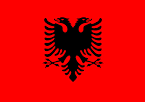Languages



Administrative Mirdita is included within the territory of Mirdita Municipality, centered in Rrëshen. In the first half of the 20th century, Mirdita was a Subprefecture, centered on Shënpal, and from 1949 it has functioned as a District centered on Rrëshen. (Mirdita, as an ethnological province, also extends to the territory of the Municipalities: Lezhë, Shkodër, Mat and Pukë.) Mirdita has been inhabited since ancient times by the Illyrian tribe of Pirusts, who are known as good warriors and experts and processors of copper ore. The archaeological material discovered by the expeditions of the 60s - 90s, in Bukël, Prosek, Kodër - Rrëshen, Kaçinar, Perlat, etc., proves the continuity of life in this territory from the Neolithic period onwards, where the Illyrian helmet found stands out. . in Përlat etc. In Roman times, the mines of Bulgri and Fani were mentioned. The Principality of Arbër of the 12th - 13th century, with the chieftain Progoni and his sons, Gjini and Dhimitri, had one of its important centers in the Interfane of Mirdita, where the State of Arbër was for some time.
It was discovered in Gëziq an epigraphic inscription from that period, as well as the coat of arms of the State of Arbër, important artifacts found on display in the National History Museum Tirana. The Blinishte family (in Blinisht of Mirdita) is the most famous Door medieval settlement in the area that would later take the name of Mirdita. The abbey of Mirdita in Orosh is a continuation of the Benedictine Assembly of the Holy Mountain, meanwhile that such Assemblies have also existed in Rubik, Ndërfana e Shënpal. Mirdita in it the past has been self-governing according to its constitutional, canon law, by means of 24 Heads (Elders) and Assemblies of the Province. Gjomarkaj were the door princely, captain of Mirdita, who mentioned since the 17th century.
Oroshi, Spaçi and Kuzhneni make up the first core of Mirdita, otherwise "The three bajraks of tribe"; then, joining them and Fani and Dibri, the "Five Bajraks" are formed of Mirdita". In the second half of the 19th century, with Kthella, Selita, Rranza, etc and Kryezezin, Vela, Bulgri and Manati, the provincial unity of "12 the bajraks of Mirdita". Mirdita geographically lies in Central Albania. Its height is starting from 80 - 100 meters above sea level in the area low (Rrëshen, Rubik, etc.) up to 1500 - 2000 meters above sea level in the mountains of Kuzhnen, Fan, Spaç and Selita. Mirdita in the 20th century is mentioned for the Copper Industry, the "Mirdita" Ensemble, winner of the Festival flag National Folklore of Gjirokastra in 1978 and the well-known Volleyball team "Minator", who has played in the first category at the national level.